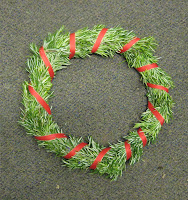If you’re paying attention to the news, you’re bound to hear something about Supplemental Nutrition Assistance Program (SNAP, formerly known as Food Stamps), and for good reason – this September alone over 46 million people used the program. That accounts for 1/7 Americans. The program has never been this big before.
I am among one of the newer beneficiaries of SNAP. I have been on the program for over a year now and at the same time I’ve been working on food related issues as part of the Food Council development and food systems improvement. It’s been interesting to hear the different takes on such a widely used and hotly contested program from which I benefit.
At first I felt like I was cheating the system a little bit: I work (even though it’s for little pay), I have a family that is willing to provide assistance if needed, and I don’t find myself starving. According to statistics, my situation is no exception, it’s the norm. Working households are the normal demographic of SNAP beneficiaries. Since the early 90’s the profile of a typical beneficiary has shifted from the majority being nonworking households to working households. In fact, today there are nearly three times as many working households using SNAP as there are nonworking households (http://bit.ly/dnXNyy).
How did that  happen? Well, I’m really no expert, but from what I can tell this demographic shift had much to do with President Clinton’s Welfare Reform in the mid 90’s. President Clinton at the time was trying to cut Cash Aid so as to end dependency on Federal Assistance that had been around since the New Deal. Through Washington politics, the Food Stamp program was mixed into the legislation (Food Stamps were not previously considered a Welfare program). Of course, the new law didn’t completely drop Cash Aid or the Food Stamp program, but the programs became stricter and more rigid (http://nyti.ms/ekdTpo).
happen? Well, I’m really no expert, but from what I can tell this demographic shift had much to do with President Clinton’s Welfare Reform in the mid 90’s. President Clinton at the time was trying to cut Cash Aid so as to end dependency on Federal Assistance that had been around since the New Deal. Through Washington politics, the Food Stamp program was mixed into the legislation (Food Stamps were not previously considered a Welfare program). Of course, the new law didn’t completely drop Cash Aid or the Food Stamp program, but the programs became stricter and more rigid (http://nyti.ms/ekdTpo).
Eligibility requirements and the direct management of the programs became the responsibilities of State governments. This is why different states can have different eligibility factors. Some states take into account personal assets while others don’t.
The new legislation brought about a shift in outreach to the working poor. This shift started with President Clinton and was expanded by President Bush, later to be fully embraced by President Obama. Originally it was (and generally is still called) Food Stamps, but to reflect the changes in the philosophy of the program, it is now known as Supplemental Nutrition Assistance Program. This reflects the shift in focus from a full Welfare system to supplemental nutrition assistance. Rather than seeking to fully support a family, the program helps a family get by.
I’m not sure that this change is well known or well understood. From what I can tell from reactions I read in articles online and from news interviews, most Americans believe that the majority of SNAP participants are a bunch of lazy people that don’t work and completely rely on the program. While this may or may not have been true thirty years ago, the statistics prove its different today. Most Americans on the program are people in situations like mine. They don’t earn quite enough, and need an extra boost to carry them through. MSNBC had a good story on people who use SNAP today. You should check it out: http://bit.ly/u7OBDd.
I am putting together a series of posts by guest bloggers over the next couple of weeks to highlight their experience and knowledge of how the program works and influences the lives of its clients. I hope you enjoy the articles and it spikes up some debate. If you have any specific questions, concerns, or opinions please feel free to leave a comment.



